The Philippine Air Force aspires to have its own set of Long Range Patrol Aircraft or LRPA that is specifically designed to conduct surveillance missions within the Philippine airspace, of which it includes areas within the country's own Exclusive Economic Zone or EEZ. This comes as the activity on the country's western seaboard comes with increased activity from unwelcomed visitors plus the similar trends in the tensions that come with the activities conducted.
INTRODUCTION
.jpg) |
The Philippine Air Force may finally get its pair of Long-Range Patrol Aircraft as part of its Modernization Efforts.
Image Source. |
The Philippine Air Force gears up for an improvement of both its capability and organization as the AFP Modernization Program implementation process intensifies with the acquisition of military hardware left and right, and with as many willing bidding suppliers as possible. And with their objectives slowly comes into fruition comes a single acquisition project that has taken years before it finally pushed through.
Recently, according to these series of reports provided, the Philippine Air Force awards the contract for at least two Long-Range Patrol Aircraft or LRPA under the acquisition project of the same name to the Israeli defense firm Elbit Systems Ltd, whereby they will provide their respective sensor suites and other components, while the aircraft itself may come from the Italian company Leonardo, with the preferred platform being the ATR 72-600.
The deal finally comes with a breakthrough after a decade's worth of waiting and seeing the project facing multiple obstacles, as other projects of the Armed Forces of the Philippines already moves and the entire Revised AFP Modernization Program under R.A. 10349 undertaking the entire Horizons one, two, and three phases. From this point, the acquisition project finally taking progress is already good news of its own worth.
This topic will deal regarding the additional details about the acquisition project itself, as well as other relevant information about the aircraft's development, operations, and specifications, and the concept regarding the use of Long-Range Patrol Aircraft for operations such as in maritime patrol missions and on other areas that its functions work best as designed and as intended for.
ADDITIONAL INFORMATION
 |
| Notice to proceed issued on May 31, 2023, with expected delivery dates slated on 2025 and 2026, respectively. |
While the information that Elbit Systems Ltd, has awarded a project for the delivery of at least two (2) ATR 72-600 Long-Range Patrol Aircraft for the Philippine Air Force, there are some information that have shared by several contributors here on Pitz Defense Analysis, especially regarding on the details as provided on the image above regarding the issuance of the Notice to Proceed or NTP, and the Expected Delivery Dates.
A Notice to Proceed or NTP as described in the procurement law or the Republic Act 9184, is a document that a local bids and awards committee, or the ones in the Department of National Defense in this case, is something that the entity that sets the procurement needs to issue to the winning bidder not later than seven (7) calendar days. In our understanding, this means that it is a document that will serve as a go signal for the winning bidder to get the manufacturing phase going.
As the materialization of the manufacturing phase gets on, the winning bidder, or Elbit Systems Ltd., in this case, needs to comply and get the goods- the pair of ATR 72-600 Long Range Patrol Aircrafts, delivered on the day or even before the expected delivery dates as this comes in the contract signed between the winning bidder and the procurement entity. The expected delivery dates issued above will have the first LRPA delivered to the Philippine Air Force in the 2nd Quarter of year 2025 or 730 calendar days since receipt of NTP, and the final delivery of the second aircraft taking place in the 2nd Quarter of the year 2026 or 1035 calendar days since receipt of NTP.
Based on the information above, it shows that it may take more time for the Philippine Air Force to just wait for the manufacturing process to take its way, before Elbit Systems Ltd and Leonardo to provide the sensors suite and the aircraft, respectively, along with the process that have the platform integrated, tested, and making sure that it complies with the specifications set by the end-user or the procurement entity's Technical Working Group or TWG.
Overall, the two to three year wait on the delivery dates provided is shorter than the almost a decade worth of getting this acquisition program rolling with obstacles regarding the bidding process, as the details provided here entails a clear direction for the project involving the Long Range Patrol Aircraft, and with it comes with a full certainty that the Philippine Air Force may get these platforms, unless there are production-related problems along the way.
THE AIRCRAFT'S DEVELOPMENT HISTORY
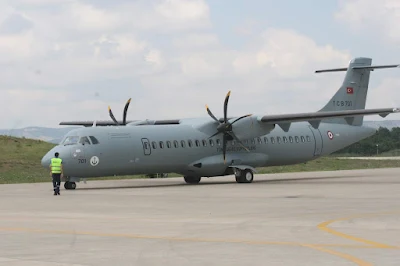 |
Here is an ATR 72 Maritime Patrol Aircraft of the Turkish Air Force.
Image Source. |
Like any other aircraft designs and inventions, the discussion about the pair of Long-Range Patrol Aircraft by the Philippine Air Force may not be complete without understanding the concept and developments regarding the inception of what became the final product itself. For the case of the ATR 72 aircraft, its development comes with air travel and short-range passenger transport in mind.
The ATR 72 aircraft itself is a direct development of the shorter ATR 42 aircraft, of which the latter came as a concept in the early 1980s from a manufacturer formed from a joint consortium of both French and Italians coming in the name of ATR or Aerei da Trasporto Regionale or Avions de transport régional, both referred as the Regional Transport Airlines in both Italian and French, respectively.
The original ATR 42 aircraft comes as it has described in its designation - an aircraft that has the capacity of carrying at least 42 passengers. The ATR 72 aircraft, meanwhile, comes with at a capacity of at least 72 passengers. And it is with the increasing demand in this segment that the aircraft operates that the aerospace manufacturer dealing in this project comes with an idea that involves developing, introducing, and mass-producing the stretched variant of this type of aircraft that has produced during that period.
Since the maiden flight in 1984, the French-Italian joint consortium company comes in a decision to launch a stretch program for its aircraft lineup, resulting in the inception of the ATR 72 aircraft that is known today. It took more years for the company to sort things related to the testing and certification of the aircraft, whereby the first produced ATR 72 aircraft unraveled by the company in 1988, and eventually getting its certification on October 27 of the said year.
With the design success of the ATR 72 and its shorter predecessor as a regional-based airliner makes it a viable option for several airlines that still use it presently, whereby it is still being produced by this same joint venture of an aerospace company, of which its current structure comes as a joint venture between Airbus (succeeding Aerospatiale), and Leonardo (succeeding Aeritalia), with the latter providing the aircraft into the military and defense segment, which is now the primary topic for this discussion.
SPECIFICATIONS
 |
These are the main features of an ATR 72 airliner aircraft.
From ATR’s Brochure. |
As this refers to the Elbit’s Long-Range Patrol Aircraft Project for the Philippine Air Force, discussing its specifications count as an essential part of this topic, as it gives insight over the overall capabilities of the offer made for the Philippine Air Force, ranging from the dimensions of the aircraft to its engine output and the capabilities that came with it. Add also to the mix are the subcomponents that the Israeli company may install in the aircraft.
Regarding the aircraft that Elbit Systems Ltd has offered to the Philippine Air Force, the design and the variant offered will be the ATR 72-600 aircraft, the current variant of the ATR 72 aircraft that is actively pushed by ATR primarily for regional airlines to use, with military users like the Philippine Air Force being another segment, giving the flexibility on its utility, purpose, and usage, depending on which end user that such type of aircraft may end with.
The airline version of the ATR 72-600 aircraft has the capacity of carrying at least 72 passengers with high pitch, which originally comes with the design development of this stretched variant of the shorter ATR 42-600 aircraft. The overall length of the aircraft comes at around 27.17 meters, longer than ATR 42’s fuselage, which is around 22.67 meters. Likewise, the wingspan of the ATR 72 comes at around 27.05 meters, making the aircraft wider than ATR 42, which has 24.57 meter wingspan.
Speaking of engines, the ATR 72-600 aircraft’s engine configuration comes with two (2) Pratt and Whitney PW127XT engines, which comes with a 2,750SHP or Shaft Horsepower. The engines enable the aircraft to have a maximum takeoff weight or MTOW of 23,000 kilograms, while having a maximum landing weight of around 22,350 kilograms. Also, the engines give the ATR 72 aircraft the capability of attaining a maximum cruising speed of around 500 kph or kilometers per hour, or at around 269.98 knots. Completing it up, the aircraft’s coverage comes at a range of around 740 NM or 1,370 kilometers, at full pax.
In comparison with other aircraft of the Philippine Air Force, such as the C295 Medium-Lift Cargo Aircraft, the ATR 72-600 aircraft that the air service branch may get as part of its Long-Range Patrol Aircraft requirements come as approximately similar, although there are minor variations regarding the specifications of the two said aircraft. For instance, the takeoff weight of the C-295 aircraft comes at around 23,200 kilograms, which makes it heavier by a bit as compared to the ATR 72-600.
Another thing to take note, continuing the ATR 72-600 aircraft’s comparison to the C-295 Medium Lift Aircraft that the Philippine Air Force already has in its airlifting fleet, is that the former comes larger in dimension compared to the latter, enabling it to provide a bit of extra space for any components of the Long Range Patrol Aircraft to get installed on by Elbit Systems along the way. On another note, the C-295’s engines also come with a Pratt and Whitney, although it is a PW127G engine with a power of around 3,058 ESHP.
Completing this up, an ATR 72-600 aircraft will not be a Long Range Patrol Aircraft variant without the sensors and technical subcomponents that Elbit Systems get installed onboard. The aircraft may come with sensors related to Communications Intelligence or COMINT, Electronic Intelligence or ELINT, Electro-Optical/Infrared (EO/IR) Camera, and a Media Management Suite or MMS that can handle sensor data that can transmit to other units of the Philippine Armed Forces through a data link communications platform.
VARIANTS
 |
Local Philippine airline Cebu Pacific comes with a cargo variant of the ATR 72 aircraft.
Image Source. |
The ATR 72 aircraft, just like many other types of aircraft, also comes with many variants with respective specializations and improvements that come integrated, along with varying design variations that focuses on differing functions and purposes that an end-user has in mind regarding its use of an aircraft such as the ATR 72. In fact, the ATR 72-600 Long Range Patrol Aircraft is a specialized aircraft of its own variant, leaning nearer to the
ATR 72MP category, albeit with some differing specifications.
One of the ATR 72 variants available is the ATR 72-600F Freighter variant, of which this comes different from the usual ATR 72-600 regional airliner that the company markets to multiple airliners across the globe. One of those users of such aircraft is the Philippines’ very own
Cebu Pacific Air (see image above), whereby it operates a single ATR 72-600 cargo aircraft, coming alongside its airliner fleet of ATR 72 aircraft for the country’s short range travel, as opposed to its Airbus aircraft that links key cities in the country.
Another thing to check is that while the
ATR 72-600 aircraft comes as the most recent and currently produced and marketed aircraft, the aircraft comes with various iterations and previous versions that come with lesser capabilities and configuration, as it does not come with the current Pratt and Whitney engine that makes it a known, more-capable aircraft that it is today. These previous iterations are the ATR 72-200,
ATR 72-210,
ATR 72-212, and the
ATR 72-500 passenger and freighter aircraft.
One key difference between variants is in terms of passenger capacity, whereby the ATR 72-600 can carry four more passengers with its 70 overall capacity, compared to ATR 72-200 and ATR 72-210’s 66 passengers overall capacity. Also, another key factor in the differences shown is the aircraft’s differing engine configuration, as mentioned, with variables affecting the overall performance of each variant mentioned, such as regarding to overall range, maximum payload allowable per variant, and the rate of climb that each ATR 72 version comes with.
For instance,
the rate of climb for an ATR 72-600 aircraft comes at around 1,355 feet per minute, which comes less compared to the ATR 72-500 with a rate of climb comes at around 1,374 feet per minute, 1,462 feet per minute for the ATR 72-210, and 1,390 feet per minute for ATR 72-200 variant. The same variable goes with range at maximum pax, whereby the ATR 72-500 comes with 785 nautical miles or 1,454 kilometers, ATR 72-210 with a range of 805 nautical miles or 1,491 kilometers, and ATR 72-200 with a range of 872 nautical miles or 1,615 kilometers.
Hence,
while the variables on performance comes at random that an earlier variant performs better compared to the ATR 72-600 latest version of the aircraft, the primary contention in its improvement comes in terms of aircraft capacity, as this comes important for a Long Range Patrol Aircraft that comes with sensors and communications equipment onboard. This reflects on each variant’s maximum payload, whereby the ATR 72-600 comes with a maximum payload of 7,500 kilograms as opposed to the 7,200 kilograms for the ATR 72-500 and 7,000 kilograms for both ATR 72-200 and -210 variants.
This means that the ATR 72-600 comes with reasonable terms of capability for range and capacity that Elbit prefers it as a choice of aircraft to provide for the Philippine Air Force’s
Long Range Patrol Aircraft acquisition project, whereby it falls under the Special Mission Aircraft category that the Israeli defense company can provide a systems integration suite onboard an aircraft that makes it compliant to the Philippine Air Force requirements.
ELBIT’S SPECIAL AIRCRAFT PRODUCT
 |
The Special Mission Aircraft solution of Elbit Systems, as presented in its brochure.
Link reference. |
Aside from discussing the aircraft platform that the Philippine Air Force’s Long Range Patrol Aircraft may likely end up with, such as the ATR 72-600 aircraft, it is also good to
point out the capabilities of this ‘Special Mission Aircraft’ as marketed by Israel’s Elbit Systems Ltd, giving the understanding of the systems integration that may likely end up with the air service branch of the Philippine Armed Forces as part of conducting their primary mandate.
First thing to point out is the already-mentioned
Mission Management Suite or System or MMS, as this comes as one crucial component of Elbit Systems’ Special Mission Aircraft offer or the Long Range Patrol Aircraft for the Philippine Air Force. This system, as described, comes as both a command-and-control platform and also a situational awareness platform, receiving up-to-date data essential for a patrol aircraft as it receives information from other sensors onboard which will get discussed along the way.
The features pointed out for a Mission Management System, as marketed by Elbit Systems, comes not only as a Command and Control platform that can conduct mission planning, zones and route management, and alerts and controls, but also serves as a platform that gathers target detection, classification, and identification, with such data getting recorded onboard and can also get transmitted to the ground station, giving an up-to-date situation on the Long Range Patrol Aircraft area of responsibility.
Aside from the Mission Management System that served as the brains of the entire systems suite found onboard a Long Range Patrol Aircraft of the Philippine Air Force, let us note that the system will not be complete without the other sensors and subcomponents suite that
Elbit Systems said in their brochure as ‘flexible’ and ‘platform-agnostic’, as the purpose in their systems integration is to make sure they get with the specifications of the end-user and the capabilities they are after in an aircraft platform.
The sensors that may come onboard a Special Mission Aircraft of Elbit or a Long Range Patrol Aircraft include a Wide Area Persistent Surveillance or WAPS platform, Electronic Intelligence suite or ELINT sensor platform, onboard radar, onboard Electro-Optic/Infrared or EO/IR sensor platform,
Signal Intelligence or SIGINT solution, and a Communications Intelligence or COMINT suite, all of which are transmissible through an MSS for data uplink to ground station.
With the sensor's integration, the special missions aircraft or the Long Range Patrol Aircraft of the Philippine Air Force may come not only as a platform intended for maritime patrol operations, but also applicable to other objectives such as counterinsurgency operations, enabling the use of the aircraft in an event that another insurgent threat takes place in the country like the recent
2017 Marawi Siege.
Another point is that the Exclusive Economic Zone or EEZ protection feature of the aircraft really helps the Philippine Air Force improve the country’s
Maritime Domain Awareness, enforcing the country’s sovereign rights in the West Philippine Sea amidst ever-increasing Chinese aggression in the area.
With the subcomponents detailed by Elbit Systems for the Long Range Patrol Aircraft of the Philippine Air Force, it is most likely that it may not come with antisubmarine warfare or ASW capabilities, and its role comes only limited to long range surveillance patrol, specifically surveying surface vessels and can help provide updated situation like the incident that involves
white-hulled vessel standoffs during the Ayungin Shoal supply missions.
TO SUM IT UP
 |
This is the ATR 72 aircraft assembly line in Toulouse, France.
Image Source. |
The Philippine Air Force sets to get its Long-Range Patrol Aircraft after a decade of continuous bidding for the project and the bid failures that may come with it, finally making it within the reach as Israel’s Elbit Systems may provide such type of aircraft as its capabilities and subcomponents patterned after its Special Mission Aircraft solutions that it marketed in its brochures.
Regarding the aircraft platform used, the Elbit Systems Ltd preferred the ATR 72-600 aircraft, whereby this comes widely used by multiple airlines and several militaries across the world, with the Philippines’ very own Cebu Pacific Air using such type of aircraft both
for its passenger and
cargo requirements, complementing its larger Airbus A321 and A330 aircraft that served key cities and destinations inside and outside the country.
The widely used type of aircraft and the special mission aircraft solution of Elbit Systems Ltd helps provide the much-needed capabilities of the Philippine Air Force for its long range patrol missions, especially with the ever-increasing tensions between the Philippines and China over the West Philippine Sea, specifically the recent incident that took place within the country’s Ayungin Shoal,
a feature well within the Philippine Exclusive Economic Zone (EEZ).
As the Notice to Proceed for the aircraft released in the second (2nd) quarter of the year 2023, it comes with an expected delivery date of the year 2025 and 2026 for the first and second aircraft, respectively. In context, Philippines’ southwestern neighboring nation of
Malaysia also signed a deal for at least two (2) ATR 72MP aircraft, with their deal being directly with Leonardo for the delivery of such aircraft, with the dates of these aircraft being delivered also projected in the year 2025 and 2026, respectively.
This means that from this timeframe, both countries within Southeast Asia may end up having this type of aircraft, enabling both nations to monitor the situation in their respective Exclusive Economic Zones that China aims to claim within its so-called nine-dash line area. Add also the idea that
having Malaysia as another end-user of the aircraft comes as an advantage to the Philippine Air Force from a logistics point of view, as this means an additional source of spare parts.
Given that the contract signing and production of the ATR 72-600 may likely go together with the similar delivery dates of both countries’ patrol-oriented aircraft, it gives incentive for the aircraft manufacturer ATR in catering these orders in their production line, adding up any future prospects of any additional orders that may come up from either Malaysia and the Philippines shall the performance of the respective patrol-oriented aircraft satisfied the end-user requirements crafted by these aforementioned countries and their respective military.
Ending this up, the Philippine Air Force finally ended the search for its Long Range Patrol Aircraft acquisition project, with Israel’s Elbit Systems Ltd getting the contract and may likely be a reference for any future follow-up orders of this type of aircraft widely used across the world while utilizing a special mission aircraft solution crafted by the Israeli firm to cater the flexible and ever-changing mission requirements of the air service branch of the Philippine Armed Forces as it uphold its mandate of defending the nation.


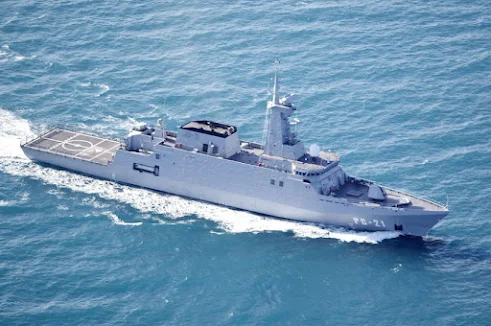












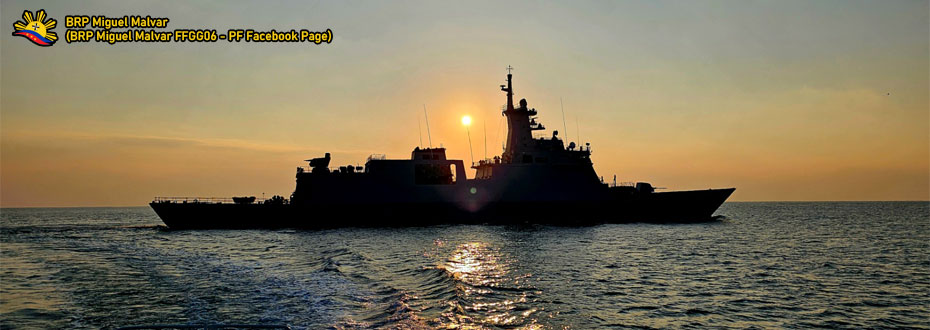

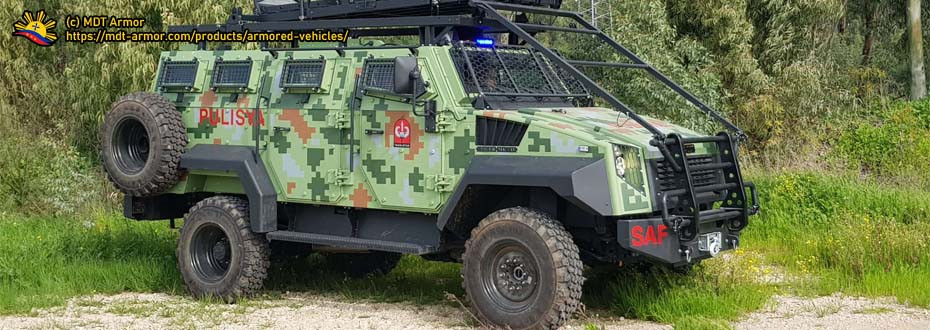

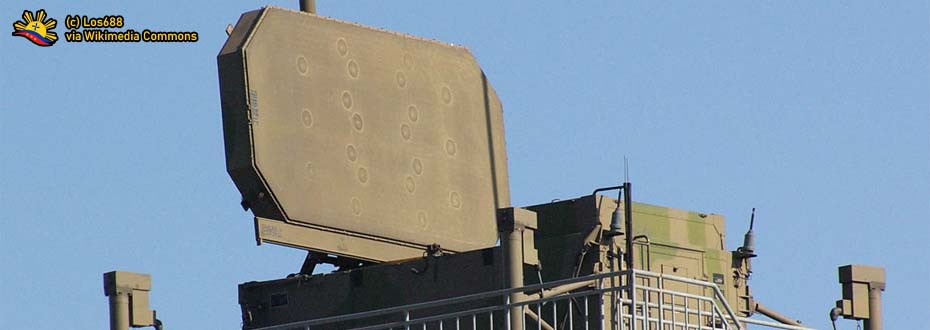







.jpg)










